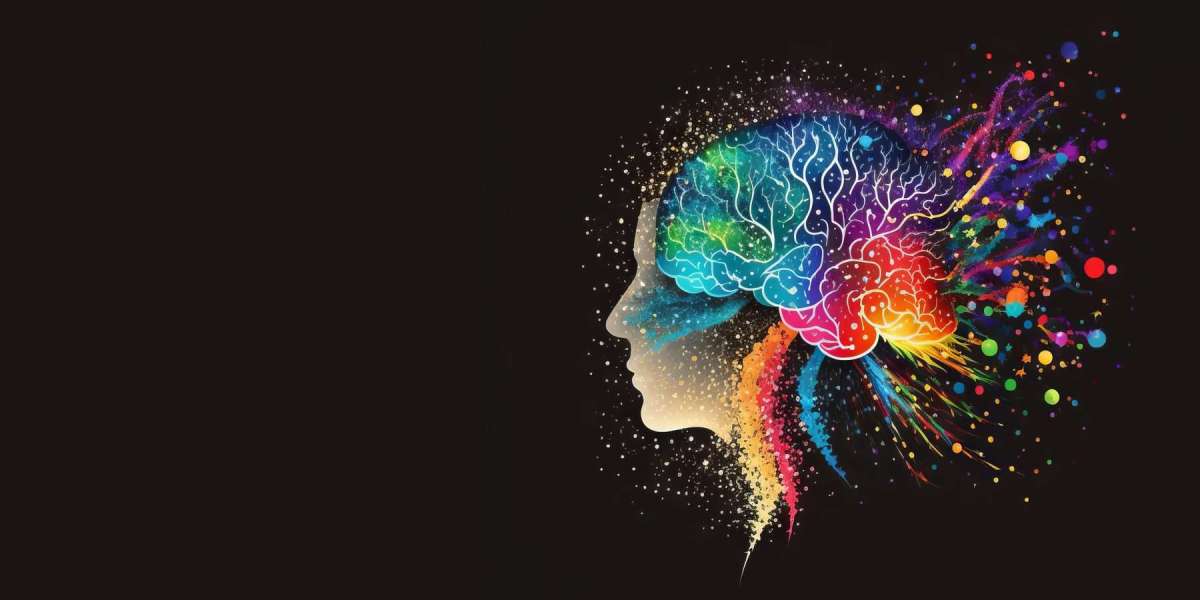ADHD is a neurodevelopmental condition that is complicated and has a substantial impact on behavior, daily functioning, and cognitive abilities. For the purpose of creating therapies and treatments that work, it is essential to comprehend the neurological causes of ADHD. This article examines the complex connection between ADHD and the brain, going into the neural underpinnings, typical symptoms, research-backed therapies, and the possible use of mindfulness meditation to treat the neurobiological components of the disorder.
Regions of the Brain and Neural Mechanisms in ADHD:
Dopaminergic Dysfunction:
A major neurobiological component of ADHD is dysregulated dopamine. Dopamine is an important neurotransmitter that controls reward, motivation, and focus. Dopamine abnormalities are a common symptom of ADHD, which makes it difficult for these people to control their urges and maintain focus.
Planning, organizing, and impulse control are examples of executive tasks that are carried out by the prefrontal cortex, which is frequently compromised in people with ADHD. Difficulties with decision-making, impulse control, and handling complicated activities are caused by structural and functional anomalies in this area.
ADHD is also associated with dysfunction of the basal ganglia, which are responsible for motor control and the formation of habits. Hyperactivity, impulsive behavior, and difficulty planning motor tasks might result from dysfunction in this area.
Noradrenergic System Involvement:
The noradrenergic system, which releases norepinephrine, is involved in ADHD as well. Problems with arousal, alertness, and attention management are caused by irregularities in this system.
Typical signs and expressions in behavior:
One of the main symptoms of ADHD is inattention, which is attributed to neurobiological deficiencies in the dopaminergic and prefrontal cortex.
Hyperactivity:
People with ADHD often exhibit hyperactivity as a result of dopaminergic and basal ganglia dysregulation. Common behavioral signs include restlessness, excessive fidgeting, and trouble focusing on quiet activities.
Impulsivity is caused by impairments in executive functioning, especially in the prefrontal cortex. ADHD sufferers can have trouble controlling their impulses, act without thinking through the repercussions, and interrupt other people.
Executive Function Deficits:
ADHD's neurobiological causes lead to executive function deficiencies, which affect multitasking, planning, organization, and time management. Academic and professional performance might be impacted by difficulties in various cognitive domains.
Therapies Based on Evidence and Targeting Neurobiological Mechanisms:
Stimulant Drugs:
Methylphenidate and amphetamines are two stimulant drugs that are often used for ADHD. By boosting dopamine and norepinephrine levels, these drugs correct neurobiological abnormalities and promote impulse control and attention span.
Anti-Stimulant Drugs:
Anti-stimulant drugs, like atomoxetine, work by preventing norepinephrine from being reabsorbed into the body. These drugs help with symptom management and general functioning by adjusting neurotransmitter levels.
The behavioral aspects of ADHD are addressed with behavioral therapy, namely cognitive-behavioral therapy (CBT). CBT assists people in creating useful symptom management strategies by focusing on impulse control and executive functioning.
Support for Education:
Academic accommodations catered to the neurobiological needs of ADHD are offered through educational interventions, such as Individualized Education Plans (IEPs) or 504 plans. Some examples of these accommodations could be special seating arrangements or extra time for exams.
Possible Uses for Mindfulness Meditation
Attention Regulation:
Mindfulness meditation improves attention regulation by emphasizing present-moment awareness. Mindfulness techniques can help people with ADHD-related inattention by teaching them to focus on the here and now.
Emotional dysregulation and ADHD are frequently associated. By creating a more stable emotional state, mindfulness meditation helps people regulate mood swings and impulsivity. It also fosters emotional acceptance and awareness.
Neuroplasticity and Brain Alterations:
Studies indicate that mindfulness meditation may cause the brain to undergo neuroplastic alterations. Frequent practice may impact neural pathways linked to self-control, emotional processing, and concentration, which may assist people with ADHD in the long run.
Stress Reduction:
The benefits of mindfulness activities in lowering stress are well-established. Because neurological issues cause stress to be elevated in many ADHD individuals, mindfulness meditation provides an excellent approach for stress management.
How to Address Neurobiological Roots in a Practical Way:
Multimodal Approaches:
A complete, multimodal approach to address the various neurobiological elements of ADHD is created by combining behavioral therapy, pharmaceutical management, and educational assistance.
Tailored Treatment Strategies:
Customized treatment strategies necessitate an understanding of the distinct neurobiological characteristics of every ADHD patient. Interventions work better when they are specifically designed to address certain neurological issues.
Parent and Teacher Involvement:
Working together to address neurobiological impairments is essential when putting methods into practice. An atmosphere of support that encourages positive conduct is facilitated by open communication.
Routines:
People with ADHD benefit from the establishment of regular daily routines. A controlled environment that encourages the formation of beneficial habits and lessens difficulties associated with executive function deficiencies can be found in predictable schedules.
In conclusion:
ADHD's neurological foundations emphasize the disorder's intricacy and the value of focused therapies. It is possible to create evidence-based treatments for certain impairments by having a thorough understanding of the brain mechanisms underlying ADHD. A supplementary strategy that may help with better attention regulation, emotional well-being, and general symptom management is mindfulness meditation, even though behavioral therapy and prescription drugs continue to be the main interventions. By taking into account the neurobiological components of ADHD, a comprehensive strategy helps people overcome the obstacles posed by the condition and improves their quality of life overall.








